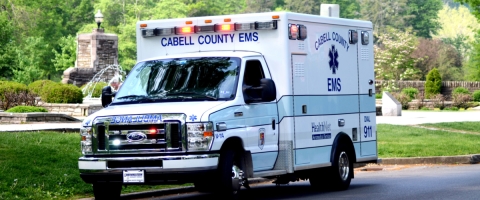Cabell County’s road to recovery
Author
Upcoming Events
Related News

Key Takeaways
Here’s a hard fact: Americans are now more likely to die from opioid overdoses than car crashes. That realization may be shocking to some, but this has been the reality in Cabell County, W.Va. for years.
Like many other places, we experienced a domino effect in which high opioid prescribing rates and prescription drug misuse led to increases in illicit drug use resulting in overdoses, overdose deaths, spread of hepatitis B and C, high rates of neonatal abstinence syndrome (NAS), and family fracturing. But with a county population just under 100,000 people —nearly 50,000 of whom are located in the county seat of Huntington — the impacts are magnified because everyone knows someone suffering.
Despite being hard-hit, Huntington Mayor Steve Williams said, “If we own our problems, we can solve our problems.” So, with leadership from city and county government, all agencies in the community have combined their different capabilities to mount a strong and comprehensive effort to respond to the epidemic’s health impacts. What’s resulted is a vibrant network that prioritizes an “any avenue to recovery” philosophy.
The local health department developed a harm reduction program to provide people who use drugs (particularly injection drugs) with respectful education, testing, treatment, counseling, referral, naloxone and disease-preventing materials, such as sterile syringes. The community health center network developed a medication-assisted treatment program to augment existing mental health treatment efforts, while substance use treatment programs expanded their services and efforts. Local hospitals developed new treatment options including a quiet unit for babies experiencing NAS, which results from being exposed to drugs in the womb. These include care and clinical protocols that provide high-tech treatment for infections and other serious complications of substance misuse, as well as for substance use disorder itself.
City fire, police, and EMS workers have developed innovative strategies to address overdose, from training all responders in naloxone use to developing a Quick Response Team that follows up with overdose survivors to offer services and reduce repeat events. Law enforcement is working to arrest major drug dealers while diverting individuals actively using drugs to treatment, and Cabell County Drug Court uses a rehabilitative approach that treats people for substance use when it is at the root of their criminal activity, resulting in a 90 percent reduction in recidivism. Public schools have developed prevention curricula and social service agencies are helping people rebuild their lives.
In addition, Marshall University, located in Cabell County, established a Division of Addiction Studies and is engaging in public health research that helps us continually monitor and define the scope of the problem, develop interventions, scale them to need, and measure results. Now, a new generation of Marshall University-trained providers will be better equipped to view addiction through a lens of disease as opposed to criminalization or moral shortcoming.
Through our collaboration, this cross-sector, multi-pronged approach to the epidemic is finding success. New cases of hepatitis C dropped 60 percent from a peak in 2016, nonfatal overdoses fell 40 percent from 2017 to 2018, and Cabell Countians have a new sense of hope that things can get better, that recovery is real and that better times can follow one of the worst epidemics of our lives.

Attachments
Related News

El Paso County, Texas helps migrants on their way
Though they don't often stay more than a day, asylum seekers receive care and services from El Paso County, Texas before they leave for their next destination.

L.A. County fends off homelessness with an assist from A.I.
A predictive model pulls data from six county departments to create a list of the county’s most vulnerable population — people who frequently show up in the county’s criminal justice and hospital systems and who access benefits like SNAP.

